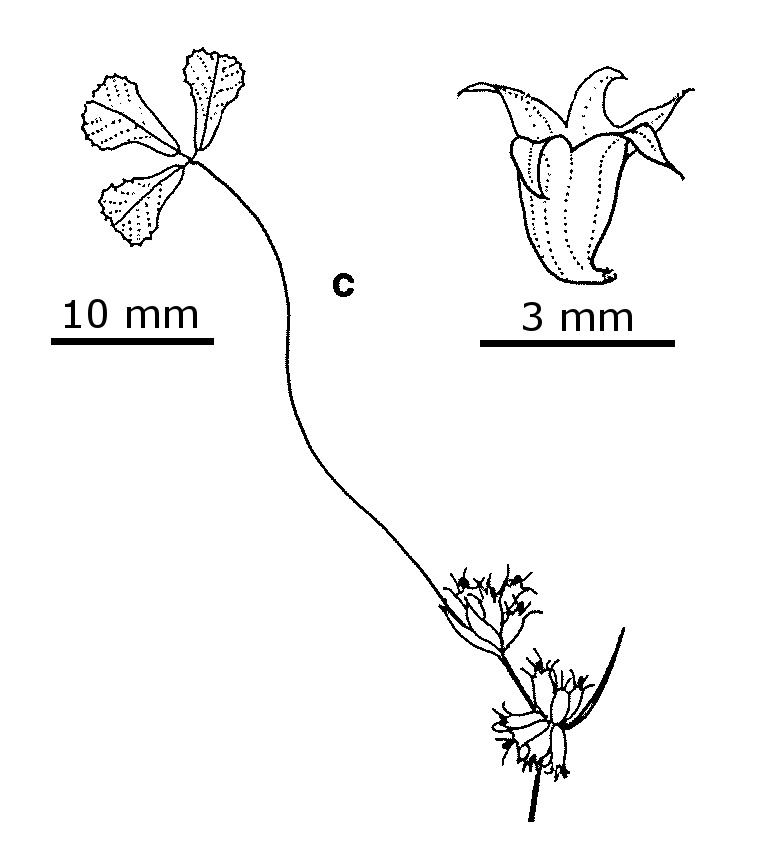Trifolium suffocatum
L. Suffocated CloverProstrate or procumbent annual herb; stems to c. 10 cm long, sometimes almost absent, glabrous or sparsely hairy. Leaves palmately trifoliolate, long-petiolate; leaflets obovate-cuneate, 3–12 mm long, 2–10 mm wide, glabrous, finely toothed, apex notched; stipules largely obscuring inflorescence, scarious or membranous. Inflorescences mostly 1–15-flowered, close to one another, axillary, umbellate, 3–7 mm long, 5–8 mm wide, sessile; flowers sessile to subsessile. Calyx 3–5 mm long, sparsely pilose or glabrous, tube cylindric, 10-veined, throat open, teeth subequal, shorter than or as long as tube, blunt, recurved in fruit; corolla 3–4 mm long, white, persistent; standard obovate. Pod ovoid, 3–5 mm long, included in calyx tube; seeds 2, lenticular to reniform, c. 0.8 mm long, yellowish, obscurely tuberculate. Flowers mainly Oct.–Dec.
LoM, MuM, Wim, VVP, VRiv, MuF, GipP, WaP, Gold, NIS, WPro, HSF. Also naturalised WA, SA, NSW, Tas. Native to Europe, the Middle East, northern Africa. Uncommon weed mostly from drier inland parts of the State.
Jeanes, J.A. (1996). Fabaceae. In: Walsh, N.G.; Entwisle, T.J., Flora of Victoria Vol. 3, Dicotyledons Winteraceae to Myrtaceae, pp. 663–829. Inkata Press, Melbourne.
 Spinning
Spinning



